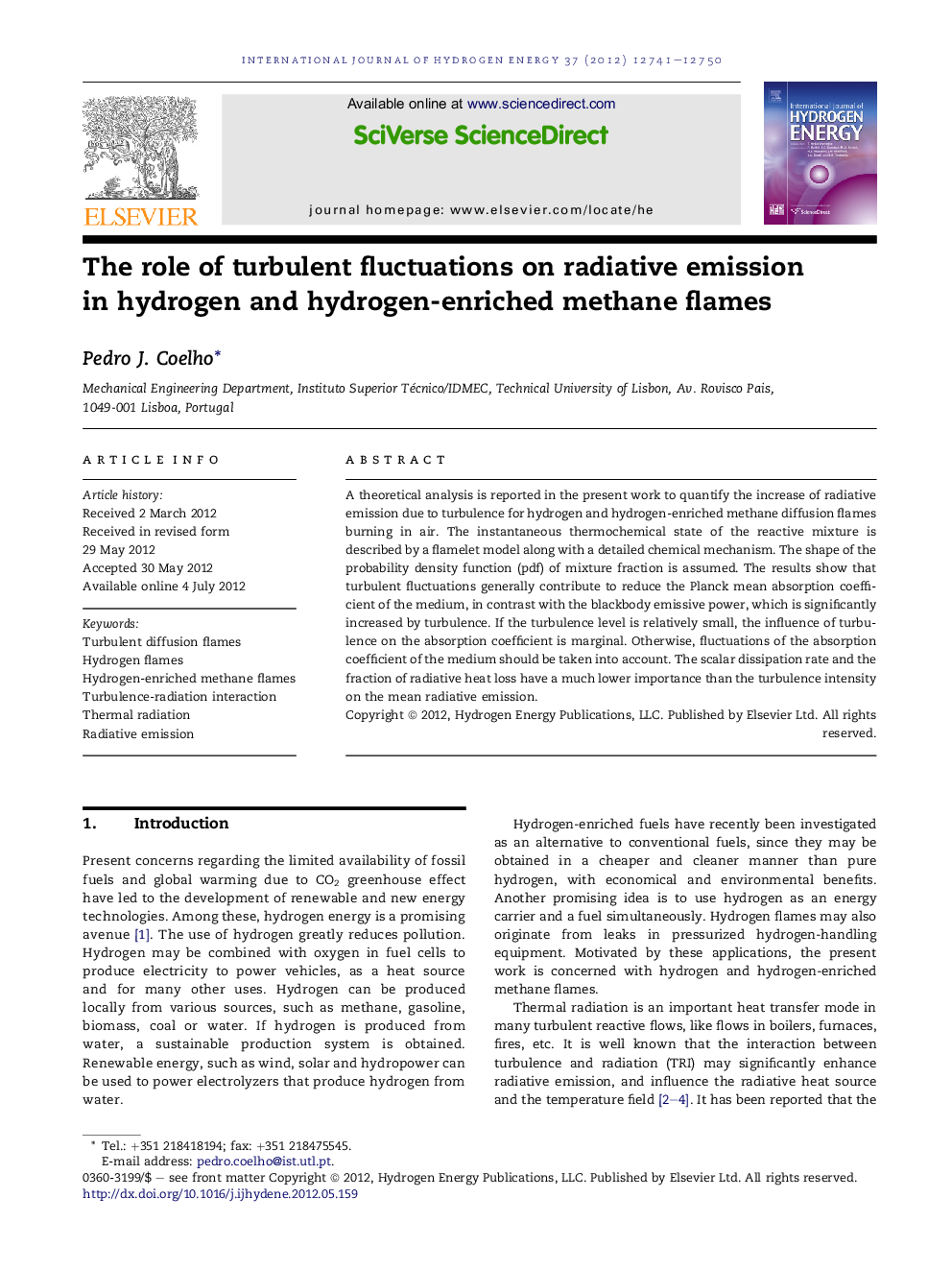| Article ID | Journal | Published Year | Pages | File Type |
|---|---|---|---|---|
| 1271113 | International Journal of Hydrogen Energy | 2012 | 10 Pages |
A theoretical analysis is reported in the present work to quantify the increase of radiative emission due to turbulence for hydrogen and hydrogen-enriched methane diffusion flames burning in air. The instantaneous thermochemical state of the reactive mixture is described by a flamelet model along with a detailed chemical mechanism. The shape of the probability density function (pdf) of mixture fraction is assumed. The results show that turbulent fluctuations generally contribute to reduce the Planck mean absorption coefficient of the medium, in contrast with the blackbody emissive power, which is significantly increased by turbulence. If the turbulence level is relatively small, the influence of turbulence on the absorption coefficient is marginal. Otherwise, fluctuations of the absorption coefficient of the medium should be taken into account. The scalar dissipation rate and the fraction of radiative heat loss have a much lower importance than the turbulence intensity on the mean radiative emission.
► A theoretical study of the influence of turbulence on radiative emission is reported. ► In general, fluctuations of the absorption coefficient should be taken into account. ► Radiative emission is overestimated if only temperature fluctuations are considered. ► Radiative emission is underestimated if turbulent fluctuations are fully neglected. ► Turbulent fluctuations are most important at the fuel-lean side of the flame front.
